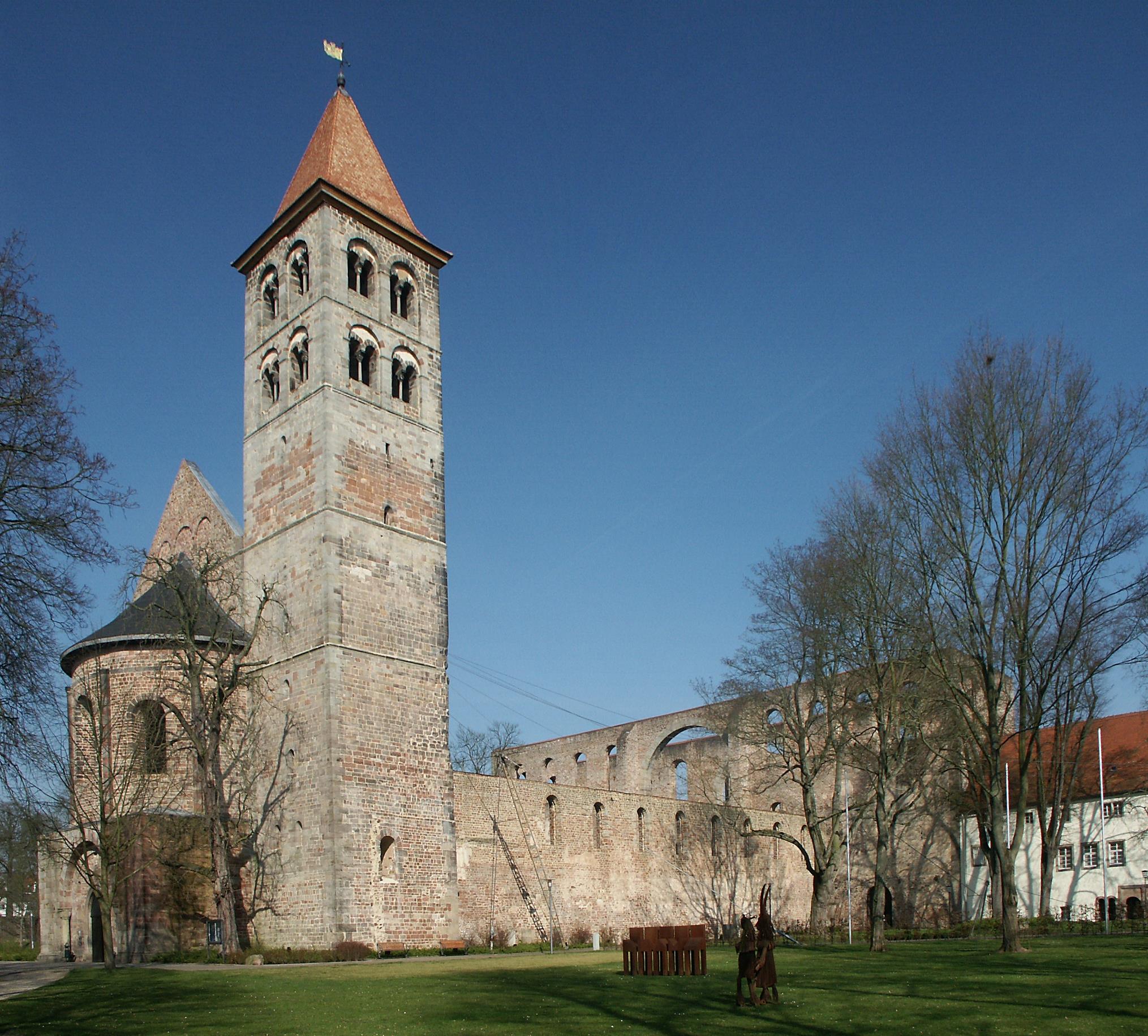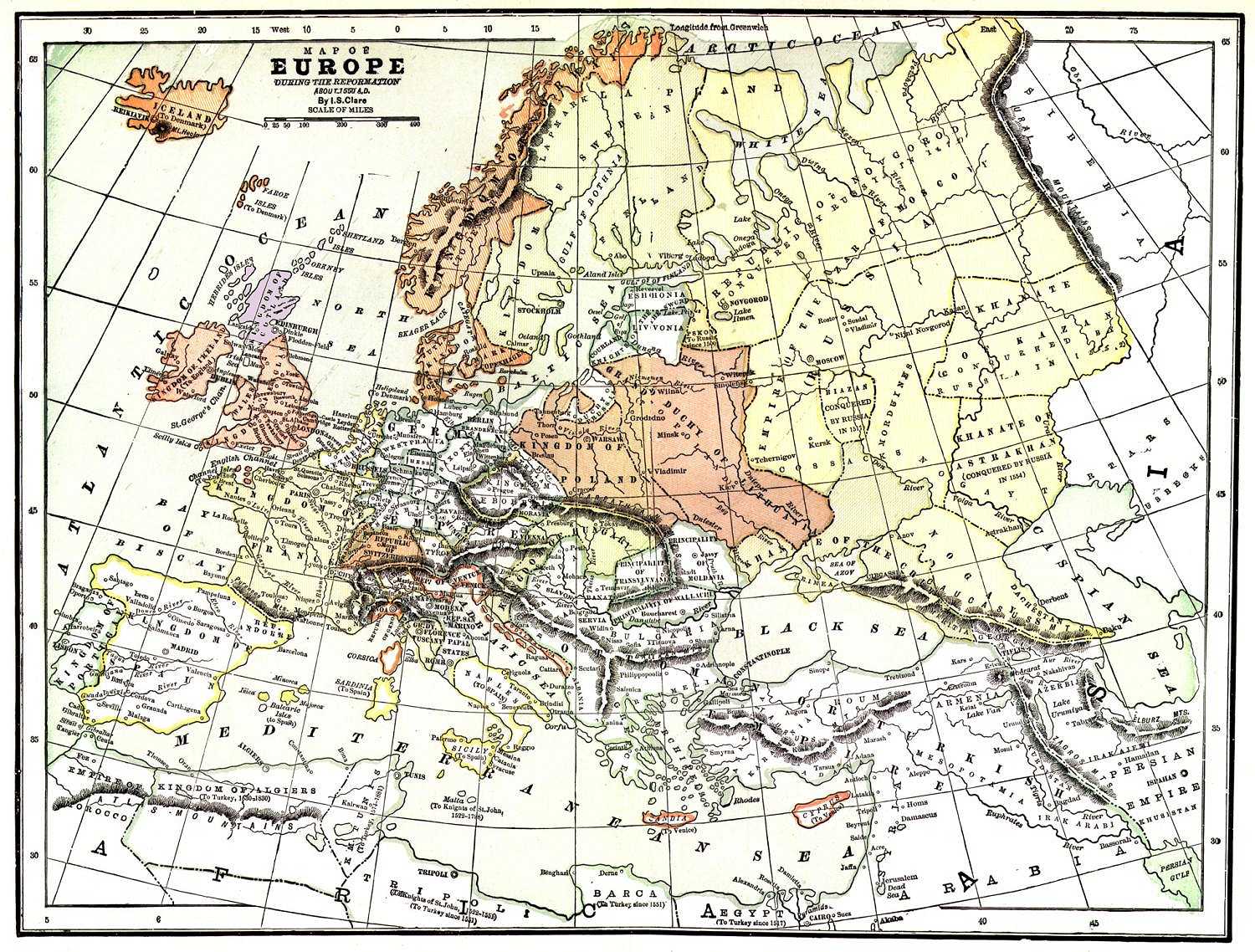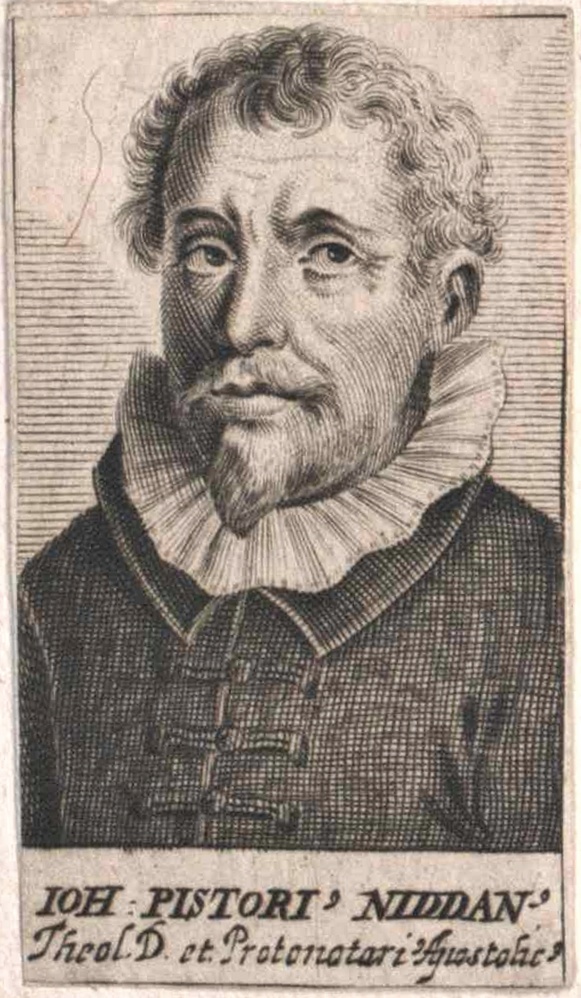|
Lambert Of Hersfeld
Lambert of Hersfeld (also called Lampert; – 1082/85) was a medieval chronicler. His work represents a major source for the history of the German kingdom of Henry IV and the incipient Investiture Controversy in the eleventh century. Life What little is known of his life is revealed in scattered details from his own historical writings. Probably a Franconian by birth, of good family, he prepared for an ecclesiastical career at the cathedral school in Bamberg, where he received tuition by Anno of Steusslingen, the later Archbishop of Cologne. On 15 March 1058 Lambert entered the Benedictine abbey of Hersfeld as a monk. On September 16, he was also ordained as a priest in Aschaffenburg and therefore sometimes called Lampert of Aschaffenburg. After his elevation to the priesthood, he made a pilgrimage to Jerusalem. Back in Hersfeld in October 1059, Lambert worked in the cloister library and taught at the monastery school. In 1071 he visited the Benedictine abbeys of Siegburg an ... [...More Info...] [...Related Items...] OR: [Wikipedia] [Google] [Baidu] |
Chronicler
A chronicle ( la, chronica, from Greek ''chroniká'', from , ''chrónos'' – "time") is a historical account of events arranged in chronological order, as in a timeline. Typically, equal weight is given for historically important events and local events, the purpose being the recording of events that occurred, seen from the perspective of the chronicler. A chronicle which traces world history is a universal chronicle. This is in contrast to a narrative or history, in which an author chooses events to interpret and analyze and excludes those the author does not consider important or relevant. The information sources for chronicles vary. Some are written from the chronicler's direct knowledge, others from witnesses or participants in events, still others are accounts passed down from generation to generation by oral tradition.Elisabeth M. C. Van Houts, ''Memory and Gender in Medieval Europe: 900–1200'' (Toronto; Buffalo : University of Toronto Press, 1999), pp. 19–20. Some ... [...More Info...] [...Related Items...] OR: [Wikipedia] [Google] [Baidu] |
Cluniac Reforms
The Cluniac Reforms (also called the Benedictine Reform) were a series of changes within medieval monasticism of the Western Church focused on restoring the traditional monastic life, encouraging art, and caring for the poor. The movement began within the Benedictine order at Cluny Abbey, founded in 910 by William I, Duke of Aquitaine (875–918). The reforms were largely carried out by Saint Odo (c. 878 – 942) and spread throughout France ( Burgundy, Provence, Auvergne, Poitou), into England (the English Benedictine Reform), and through much of Italy and Spain. Background In the early 10th century, Western monasticism, which had flourished several centuries earlier with St Benedict of Nursia, was experiencing a severe decline due to unstable political and social conditions resulting from the nearly continuous Viking raids, widespread poverty and, especially, the dependence of abbeys on the local nobles who controlled all that belonged to the territories under their jurisdictio ... [...More Info...] [...Related Items...] OR: [Wikipedia] [Google] [Baidu] |
Bede
Bede ( ; ang, Bǣda , ; 672/326 May 735), also known as Saint Bede, The Venerable Bede, and Bede the Venerable ( la, Beda Venerabilis), was an English monk at the monastery of St Peter and its companion monastery of St Paul in the Kingdom of Northumbria of the Angles (contemporarily Monkwearmouth–Jarrow Abbey in Tyne and Wear, England). Born on lands belonging to the twin monastery of Monkwearmouth–Jarrow in present-day Tyne and Wear, Bede was sent to Monkwearmouth at the age of seven and later joined Abbot Ceolfrith at Jarrow. Both of them survived a plague that struck in 686 and killed a majority of the population there. While Bede spent most of his life in the monastery, he travelled to several abbeys and monasteries across the British Isles, even visiting the archbishop of York and King Ceolwulf of Northumbria. He was an author, teacher (Alcuin was a student of one of his pupils), and scholar, and his most famous work, ''Ecclesiastical History of the English People ... [...More Info...] [...Related Items...] OR: [Wikipedia] [Google] [Baidu] |
Universal History
A universal history is a work aiming at the presentation of a history of all of mankind as a whole, coherent unit. A universal chronicle or world chronicle typically traces history from the beginning of written information about the past up to the present. Therefore, any work classed as such purportedly attempts to embrace the events of all times and nations in so far as scientific treatment of them is possible. Universal history in the Western tradition is commonly divided into three parts, viz. ancient, medieval, and modern time.H. M. CottingerElements of universal history for higher institutes in republics and for self-instruction Charles H. Whiting, 1884. pg1. The division on ancient and medieval periods is less sharp or absent in the Arabic and Asian historiographies. A synoptic view of universal history led some scholars, beginning with Karl Jaspers, to distinguish the Axial Age synchronous to "classical antiquity" of the Western tradition. Jaspers also proposed a more uni ... [...More Info...] [...Related Items...] OR: [Wikipedia] [Google] [Baidu] |
Frankfurt
Frankfurt, officially Frankfurt am Main (; Hessian: , "Frank ford on the Main"), is the most populous city in the German state of Hesse. Its 791,000 inhabitants as of 2022 make it the fifth-most populous city in Germany. Located on its namesake Main River, it forms a continuous conurbation with the neighboring city of Offenbach am Main and its urban area has a population of over 2.3 million. The city is the heart of the larger Rhine-Main metropolitan region, which has a population of more than 5.6 million and is Germany's second-largest metropolitan region after the Rhine-Ruhr region. Frankfurt's central business district, the Bankenviertel, lies about northwest of the geographic center of the EU at Gadheim, Lower Franconia. Like France and Franconia, the city is named after the Franks. Frankfurt is the largest city in the Rhine Franconian dialect area. Frankfurt was a city state, the Free City of Frankfurt, for nearly five centuries, and was one of the most import ... [...More Info...] [...Related Items...] OR: [Wikipedia] [Google] [Baidu] |
Johann Pistorius
Johann Pistorius (14 February 1546 – 19 June 1608), also anglicized as John Pistorius or distinguished as Johann Pistorius the Younger, was a German controversialist and historian. He is sometimes called Niddanus from the name of his birthplace, Nidda in Hesse. Life His father was a well-known Protestant minister, Johann Pistorius the Elder (died 1583 at Nidda). From 1541 he was superintendent or chief minister of Nidda, and took part in several religious disputations between Catholics and Protestants. Pistorius the Younger studied theology, law, and medicine at Marburg and Wittenberg 1559-67. He received the degree of Doctor of Medicine, and in 1575 was appointed court physician to the Margrave Karl II of Baden-Durlach, who frequently sought his advice in political and theological matters. Pistorius turned from Lutheranism to Calvinism; through his influence the Margrave Ernst Friedrich of Baden-Durlach made the same change. As time went on, however, Pistorius became d ... [...More Info...] [...Related Items...] OR: [Wikipedia] [Google] [Baidu] |
Elector Of Mainz
The Elector of Mainz was one of the seven Prince-electors of the Holy Roman Empire. As both the Archbishop of Mainz and the ruling prince of the Electorate of Mainz, the Elector of Mainz held a powerful position during the Middle Ages. The Archbishop-Elector was president of the electoral college, archchancellor of the empire, and the Primate of Germany as the papal legate north of the Alps, until the dissolution of the empire in 1806. The origin of the title dates back to 747, when the city of Mainz was made the seat of an archbishop, and a succession of able and ambitious prelates made the district under their rule a strong and vigorous state. Among these men were important figures in the history of Germany such as Hatto I, Adalbert of Mainz, Siegfried III, Peter of Aspelt and Albert of Brandenburg. There were several violent contests between rivals for the archbishopric, and their power struggles occasionally moved the citizens of Mainz to revolt. The lands of the elector la ... [...More Info...] [...Related Items...] OR: [Wikipedia] [Google] [Baidu] |
Lullus
Saint Lullus (Lull or Lul) (born about 710 AD in Wessex, died 16 October 786 in Hersfeld) was the first permanent archbishop of Mainz, succeeding Saint Boniface, and first abbot of the Benedictine Hersfeld Abbey. He is historiographically considered the first official sovereign of the Electorate of Mainz. Monk to archbishop Lullus was born in Wessex around 710 AD. He was a monk in the Benedictine monastery of Malmesbury Abbey in Wiltshire. It is possible that his earlier name was "Rehdgerus" (possible in a multitude of spellings including Ratkar, Hredgar, Raedgar, etc.). During a pilgrimage to Rome in 737 he met Saint Boniface and decided to join him in his missionary work in northern Germany. In 738, Lullus joined the Benedictine monastery of Fritzlar, founded by Boniface in 732, where his teacher was abbot Saint Wigbert who had also come from England. In 741, Charles Martel died, and in this year the most important phase of Boniface's career started, with Lullus as his closest ... [...More Info...] [...Related Items...] OR: [Wikipedia] [Google] [Baidu] |
Hagiography
A hagiography (; ) is a biography of a saint or an ecclesiastical leader, as well as, by extension, an adulatory and idealized biography of a founder, saint, monk, nun or icon in any of the world's religions. Early Christian hagiographies might consist of a biography or ', a description of the saint's deeds or miracles (from Latin ''vita'', life, which begins the title of most medieval biographies), an account of the saint's martyrdom (called a ), or be a combination of these. Christian hagiographies focus on the lives, and notably the miracles, ascribed to men and women canonized by the Roman Catholic church, the Eastern Orthodox Church, the Oriental Orthodox churches, and the Church of the East. Other religious traditions such as Buddhism, Hinduism, Taoism, Islam, Sikhism and Jainism also create and maintain hagiographical texts (such as the Sikh Janamsakhis) concerning saints, gurus and other individuals believed to be imbued with sacred power. Hagiographic works, especi ... [...More Info...] [...Related Items...] OR: [Wikipedia] [Google] [Baidu] |
Monumenta Germaniae Historica
The ''Monumenta Germaniae Historica'' (''MGH'') is a comprehensive series of carefully edited and published primary sources, both chronicle and archival, for the study of Northwestern and Central European history from the end of the Roman Empire to 1500. Despite the name, the series covers important sources for the history of many countries besides Germany, since the Society for the Publication of Sources on Germanic Affairs of the Middle Ages has included documents from many other areas subjected to the influence of Germanic tribes or rulers (Britain, Czech lands, Poland, Austria, France, Low Countries, Italy, Spain, etc.). The editor from 1826 until 1874 was Georg Heinrich Pertz (1795–1876); in 1875 he was succeeded by Georg Waitz (1813–1886). History The MGH was founded in Hanover as a private text publication society by the Prussian reformer Heinrich Friedrich Karl Freiherr vom Stein in 1819. The first volume appeared in 1826. The editor from 1826 until 1874 was Georg He ... [...More Info...] [...Related Items...] OR: [Wikipedia] [Google] [Baidu] |
Tübingen
Tübingen (, , Swabian: ''Dibenga'') is a traditional university city in central Baden-Württemberg, Germany. It is situated south of the state capital, Stuttgart, and developed on both sides of the Neckar and Ammer rivers. about one in three of the 90,000 people living in Tübingen is a student. As of the 2018/2019 winter semester, 27,665 students attend the Eberhard Karls University of Tübingen. The city has the lowest median age in Germany, in part due to its status as a university city. As of December 31, 2015, the average age of a citizen of Tübingen is 39.1 years. The city is known for its veganism and environmentalism. Immediately north of the city lies the Schönbuch, a densely wooded nature park. The Swabian Alb mountains rise about (beeline Tübingen City to Roßberg - 869 m) to the southeast of Tübingen. The Ammer and Steinlach rivers are tributaries of the Neckar river, which flows in an easterly direction through the city, just south of the medieval old t ... [...More Info...] [...Related Items...] OR: [Wikipedia] [Google] [Baidu] |
Hirsau Abbey
Hirsau Abbey, formerly known as Hirschau Abbey, was once one of the most important Benedictine abbeys of Germany. It is located in the Hirsau borough of Calw on the northern slopes of the Black Forest mountain range, in the present-day state of Baden-Württemberg. In the 11th and 12th century, the monastery was a centre of the Cluniac Reforms, implemented as "Hirsau Reforms" in the German lands by William of Hirsau. The complex was devastated during the War of the Palatine Succession in 1692 and not rebuilt. History St Aurelius A Christian chapel at Hirsau dedicated to Saint Nazarius had already been erected in the late 8th century. The monastery itself was founded in about 830 by the Rhenish Franconian count Erlafried of Calw at the instigation of his relative, Bishop Notting of Vercelli, who gave it the relics of Saint Aurelius of Riditio, an Armenian bishop who had died about 475, brought from Milan among other treasures; they were first placed in the oratory of St. Nazarius' ... [...More Info...] [...Related Items...] OR: [Wikipedia] [Google] [Baidu] |

.jpg)






